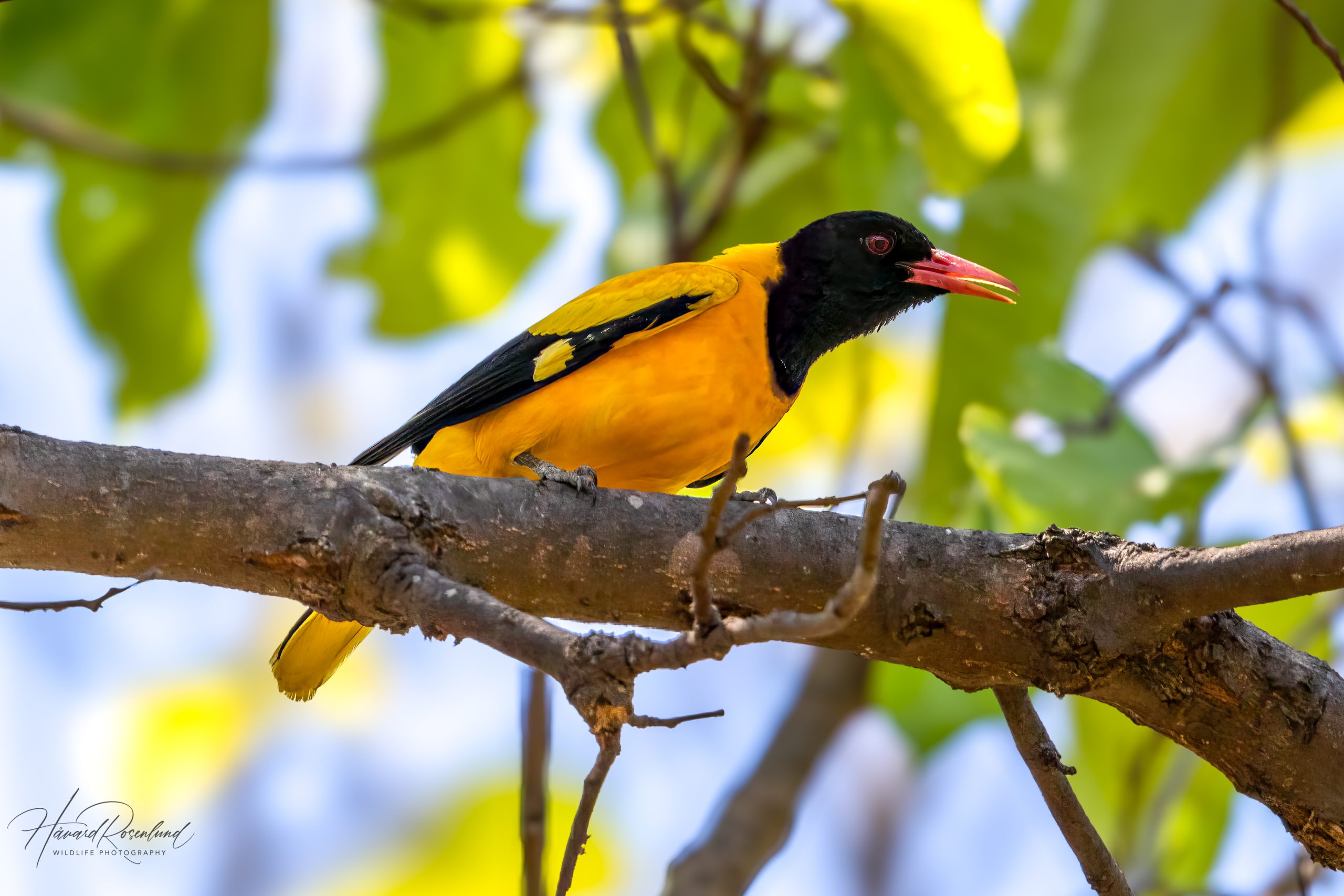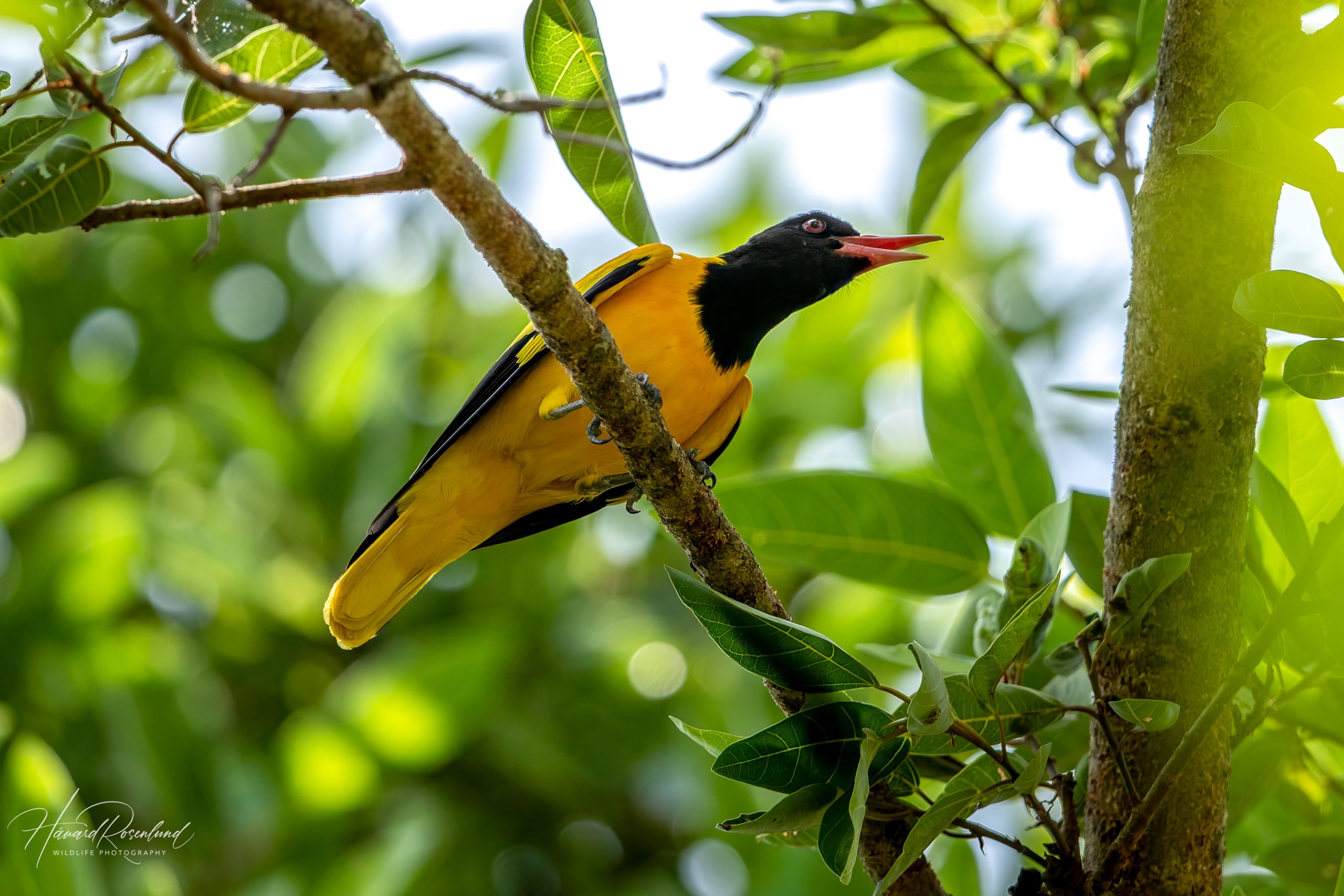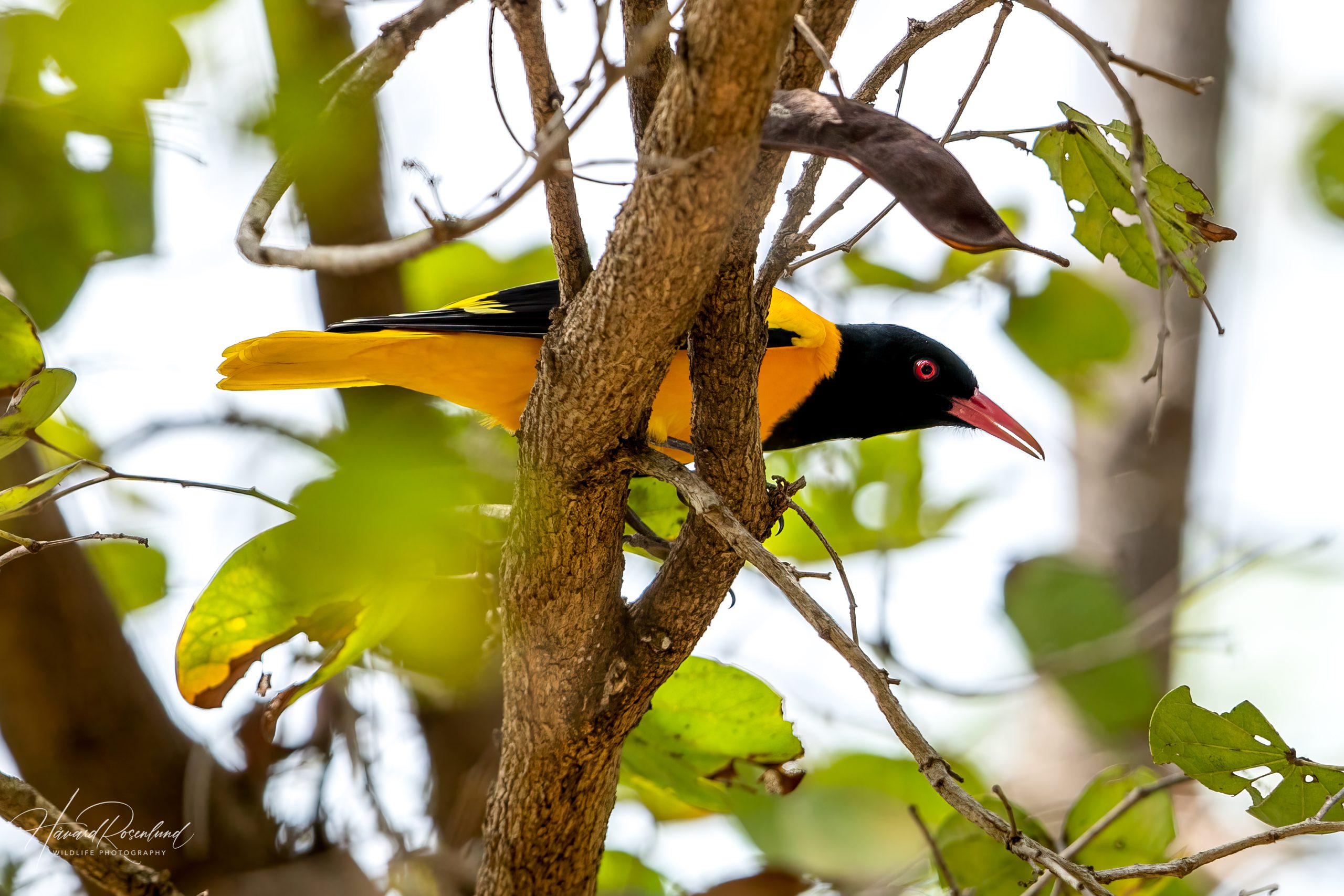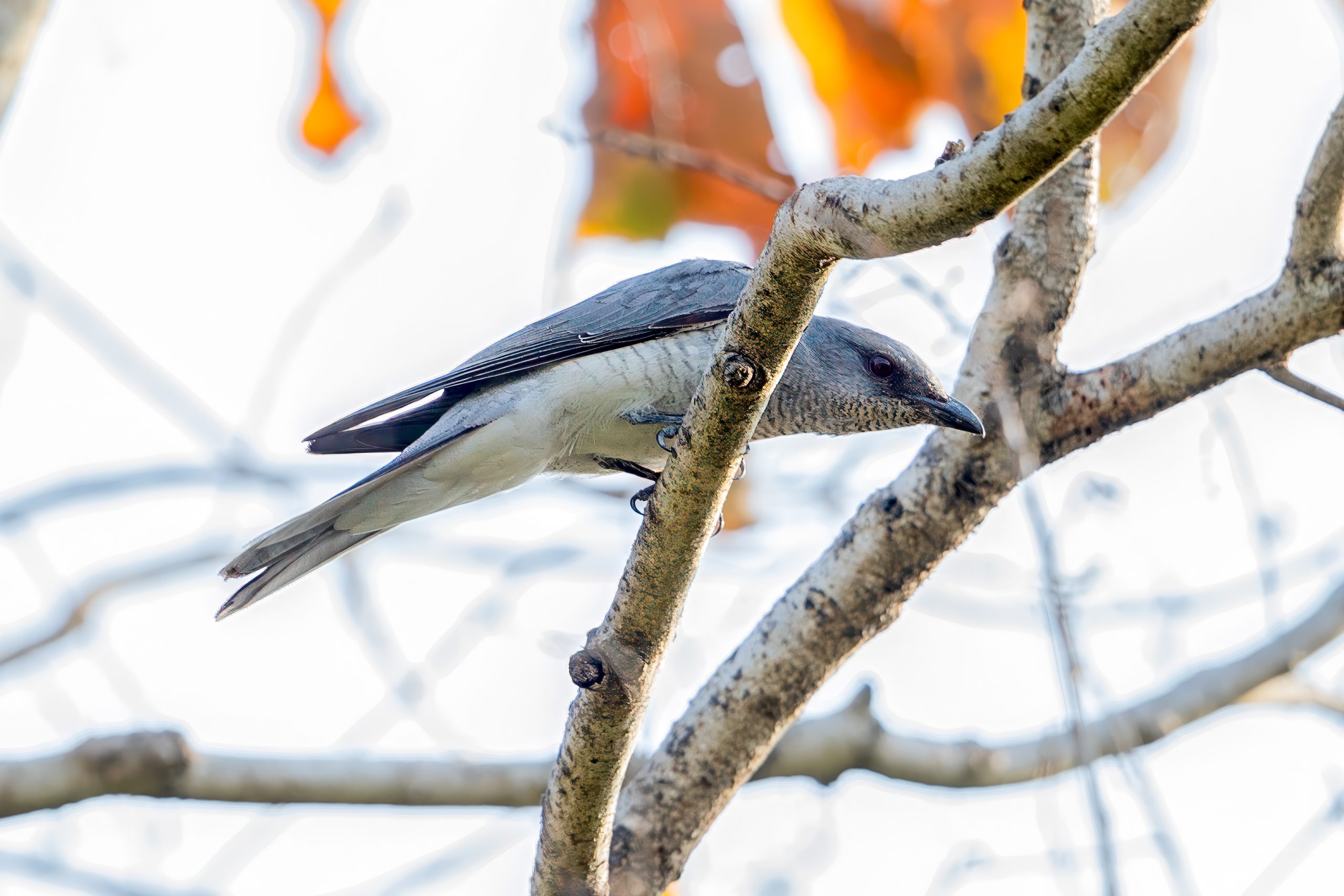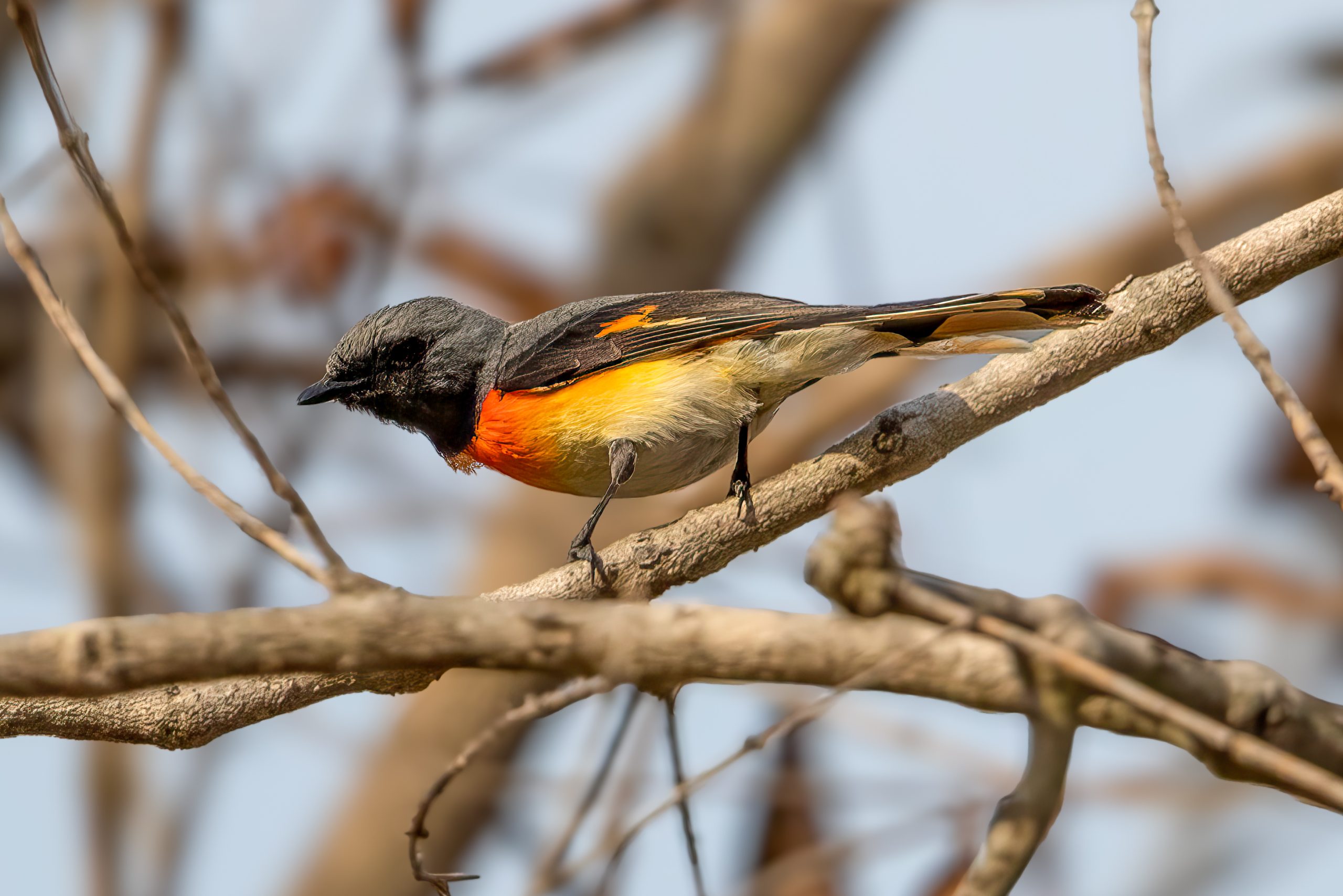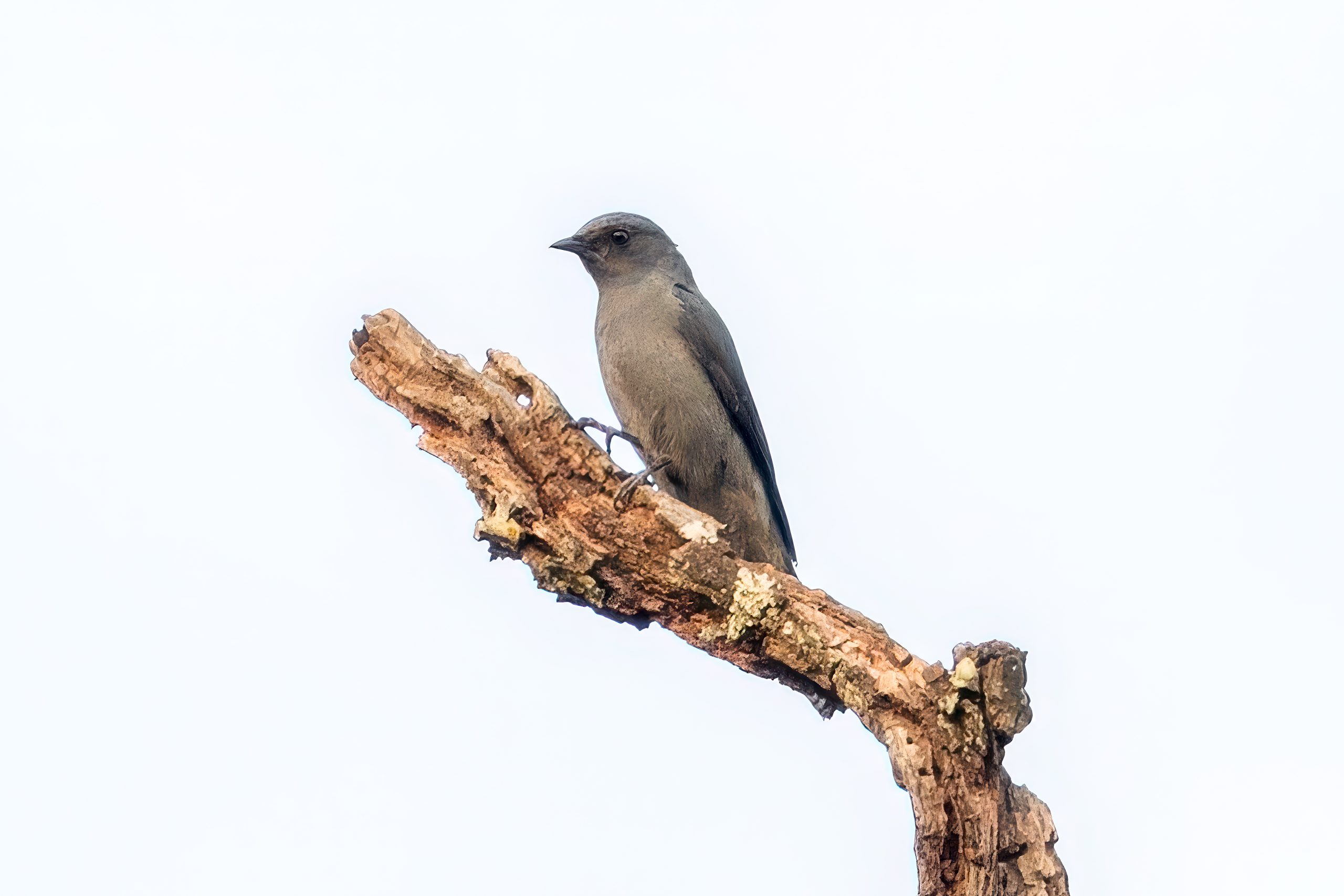Black-hooded Oriole
(Oriolus xanthornus)
Description
The black-hooded oriole (Oriolus xanthornus) is a colorful bird species with a range that spans the Indian subcontinent and extends through Southeast Asia, covering countries such as India, Sri Lanka, Nepal, and reaching southern China and Indonesia. Measuring approximately 24 cm (9.5 in) in length, this oriole boasts a bright yellow body that contrasts sharply with its black hood and throat. This plumage makes the black-hooded oriole easily identifiable within its range, although it is similar to many African species, such as the black-headed oriole (Oriolus larvatus). It is the only yellow Asian oriole species with an all-black head and throat.
Diet & habitat
The black-hooded oriole is commonly found in woodlands, both deciduous and evergreen, and is known to frequent orchards and plantations, demonstrating a remarkable ability to adapt to agricultural settings. In urban areas, the black-hooded oriole often inhabits parks and large gardens, taking advantage of the tree cover and open spaces available in these environments.
It is primarily frugivorous, feeding on a variety of fruits, including berries and figs, and supplements its diet with insects, caterpillars, and occasionally small lizards. This oriole displays agile foraging behavior, adeptly moving among tree branches to pick insects or pluck fruits.
Nesting
The breeding season of the black-hooded oriole varies with geography but generally occurs from March to August. This period is marked by distinctive courtship displays and the construction of unique nests. The female oriole weaves a deep, cup-shaped nest suspended from the end of a thin branch, using fibers, grasses, and spider silk for binding. This intricately woven structure provides a secure site for the eggs, typically numbering between two and three. Incubation lasts about 14 days, with the female primarily responsible for this task. Once hatched, the chicks are fed by both parents and fledge after approximately 14 to 17 days. However, they remain dependent on the parents for several more weeks as they learn to forage and navigate their environment.
Status
Currently, the black-hooded oriole is listed as least concern on the IUCN Red List, indicating a stable population across its extensive range. Despite potential threats from habitat destruction due to deforestation and urban expansion, this species has shown considerable resilience by adapting to a variety of habitats, including urban gardens and parks. As a result, it continues to thrive in many regions without the need for targeted conservation programs.




